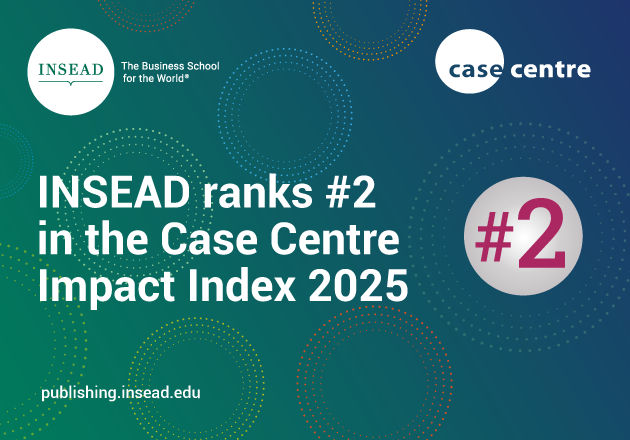This case provides an overview of Finland's primary care system, focusing on the country's public healthcare system. It presents an analysis of four key areas: value proposition and service offering; customer focus and strategy; funding model; and infrastructure.
This case provides an overview of Finland's primary care system, focusing on the country's public healthcare system. It presents an analysis of four key areas: value proposition and service offering; customer focus and strategy; funding model; and infrastructure.
This case study presents an example of business model innovation in the context of primary care delivery. It documents the story of Laastari, a new IT-driven retail health clinic chain based in Finland, including the process that links conceptual strategy to implementation and practice, as well as the evolving stakeholder ecosystem of the company.
This case study presents an example of business model innovation in the context of primary care delivery. It documents the story of Laastari, a new IT-driven retail health clinic chain based in Finland, including the process that links conceptual strategy to implementation and practice, as well as the evolving stakeholder ecosystem of the company.
This case documents challenges in the growth of a NGO whose mission is to educate and inspire individuals with diabetes. Team Type 1 engages and encourages healthy lifestyles and effective control of diabetes by example. The original model is based on active participation of patients in cycling clubs, and the question of how to scale the model to broader geographies is raised.
This case documents challenges in the growth of a NGO whose mission is to educate and inspire individuals with diabetes. Team Type 1 engages and encourages healthy lifestyles and effective control of diabetes by example. The original model is based on active participation of patients in cycling clubs, and the question of how to scale the model to broader geographies is raised.
Diabetes is a major health burden in GCC countries, mainly caused by sedentary lifestyles and unhealthy eating habits. While governments are setting up national strategies to manage diabetes and chronic diseases, the implementation is still fragmented. The case documents the challenges faced by patients and healthcare professionals dealing with diabetes.
Diabetes is a major health burden in GCC countries, mainly caused by sedentary lifestyles and unhealthy eating habits. While governments are setting up national strategies to manage diabetes and chronic diseases, the implementation is still fragmented. The case documents the challenges faced by patients and healthcare professionals dealing with diabetes.
The main case describes the design, implementation and operational implementation of a focused clinic in the Middle East. The ICLDC provides team-based care for managing diabetes with clear processes that have benefitted from lean Six Sigma tools. A supplement describes how the ICLDC fits into the broader context of the rapidly changing health system in the United Arab Emirates.
The main case describes the design, implementation and operational implementation of a focused clinic in the Middle East. The ICLDC provides team-based care for managing diabetes with clear processes that have benefitted from lean Six Sigma tools. A supplement describes how the ICLDC fits into the broader context of the rapidly changing health system in the United Arab Emirates.
The main case describes the design, implementation and operational implementation of a focused clinic in the Middle East. The ICLDC provides team-based care for managing diabetes with clear processes that have benefitted from lean Six Sigma tools. A supplement describes how the ICLDC fits into the broader context of the rapidly changing health system in the United Arab Emirates.
The main case describes the design, implementation and operational implementation of a focused clinic in the Middle East. The ICLDC provides team-based care for managing diabetes with clear processes that have benefitted from lean Six Sigma tools. A supplement describes how the ICLDC fits into the broader context of the rapidly changing health system in the United Arab Emirates.
St George Hospital in Beirut, Lebanon, is a non-profit organisation offering state-of-the-art medical care and continuous education, with a vision of delivering cost-effective healthcare that “exceeds the expectations of our clients, encourages innovation, and promotes an exceptional workplace”. The case documents a physical capacity expansion and quality and process improvements.
St George Hospital in Beirut, Lebanon, is a non-profit organisation offering state-of-the-art medical care and continuous education, with a vision of delivering cost-effective healthcare that “exceeds the expectations of our clients, encourages innovation, and promotes an exceptional workplace”. The case documents a physical capacity expansion and quality and process improvements.
DeepBreeze illustrates the challenging voyage of many startups in the medical device sector as it navigates clinical trials, regulatory agencies and reimbursement issues in a quest for growth. While it perseveres in assessing the value that patients, providers and purchasers obtain from the product, DeepBreeze is exhausting its funds and still looking for a commercial breakthrough.
DeepBreeze illustrates the challenging voyage of many startups in the medical device sector as it navigates clinical trials, regulatory agencies and reimbursement issues in a quest for growth. While it perseveres in assessing the value that patients, providers and purchasers obtain from the product, DeepBreeze is exhausting its funds and still looking for a commercial breakthrough.
This case examines strategy deployment and continuous improvement of disaster response processes at Hotel Dieu de France (HDF), a university hospital in Beirut, Lebanon. The disaster response plans, conceived and developed during three conflicts from 2006 to 2008, are then tested and improved via a drill involving Hariri Airport.
This case examines strategy deployment and continuous improvement of disaster response processes at Hotel Dieu de France (HDF), a university hospital in Beirut, Lebanon. The disaster response plans, conceived and developed during three conflicts from 2006 to 2008, are then tested and improved via a drill involving Hariri Airport.
This case allows course participants to use a graphical simulation tool to explore several key factors that lead to customer response delays in service systems. A high-level discussion can then ensue on process flow management, including tools like segmentation, process standardization and scheduling, and resource utilization planning.
This case allows course participants to use a graphical simulation tool to explore several key factors that lead to customer response delays in service systems. A high-level discussion can then ensue on process flow management, including tools like segmentation, process standardization and scheduling, and resource utilization planning.
Production and Operations Management, Health Care, Service Operations, Stochastic Simulation, Bayesian Inference, Risk and Uncertainty, Mathematical Modeling






